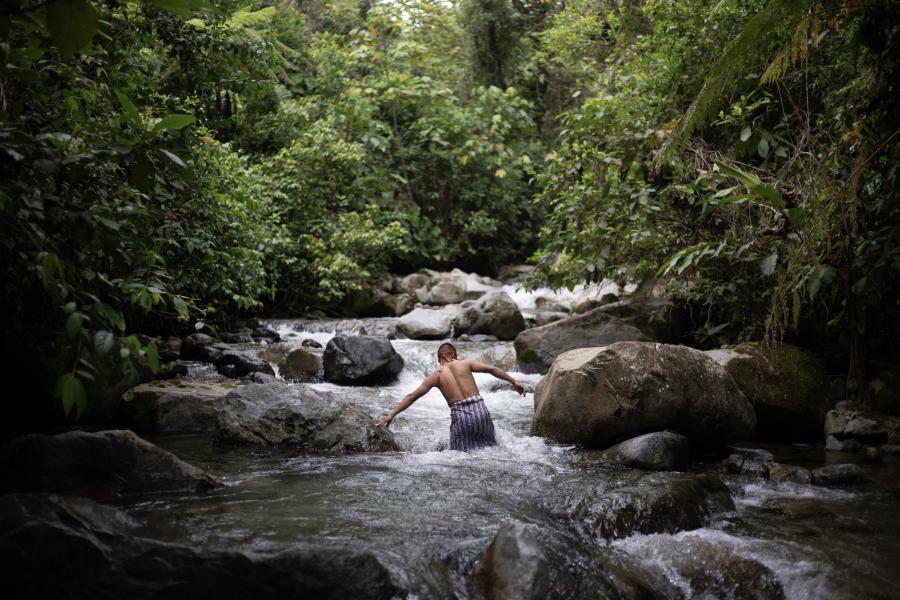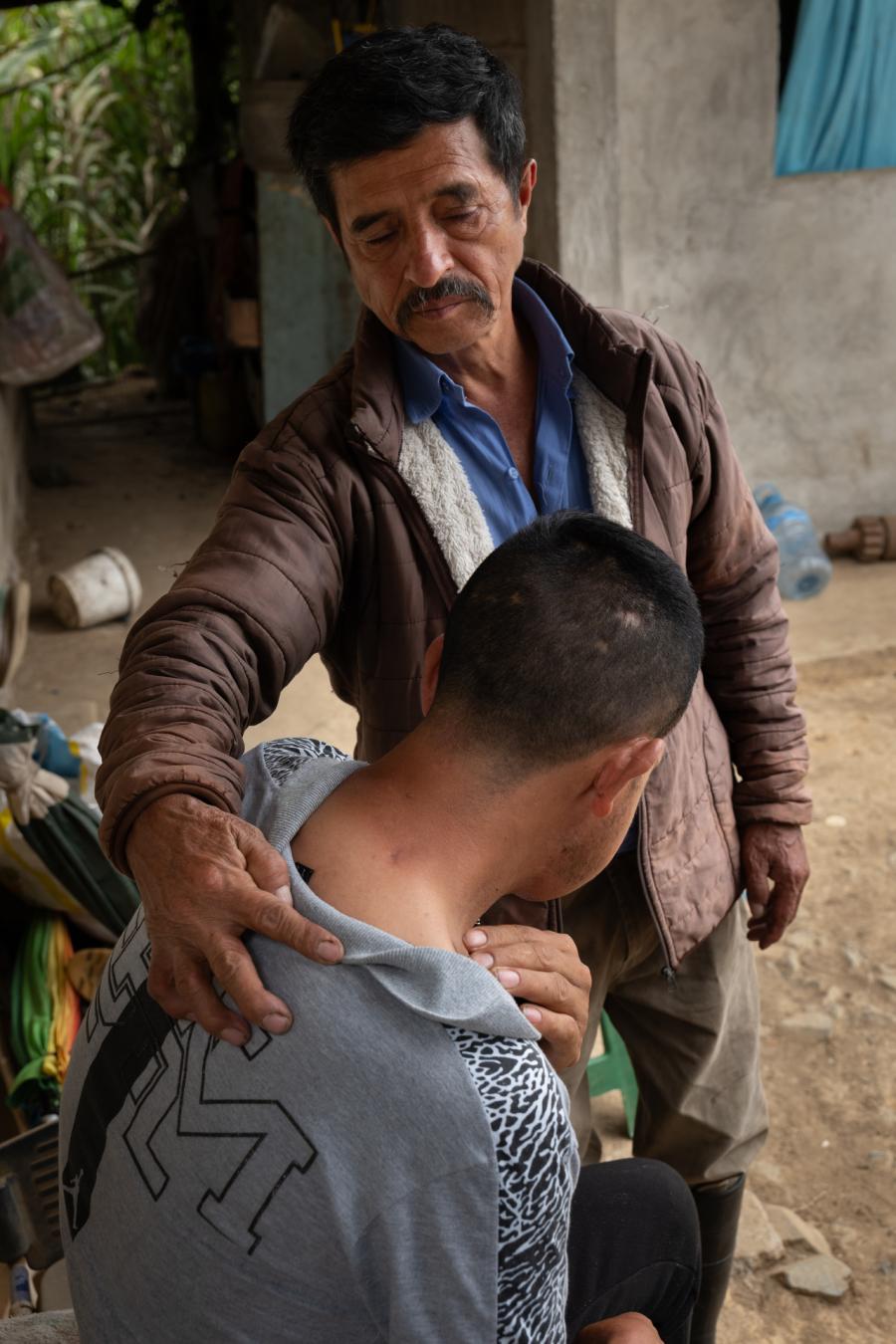In recent years the world has turned its attention to the plight of its tropical rain forests and the indigenous residents who occupy them. Road construction, colonization, cattle ranching, and various forms of resource extraction threaten to destroy the vital biological diversity contained within these forests. These changes, along with indigenous peoples' increased involvement in the market economy, are drastically modifying the social and physical environments in which indigenous forest dwellers have lived for centuries.
The irreversible environmental and social damage will continue unless immediate steps are undertaken to prevent uncontrolled deforestation and protect the rights and needs of indigenous populations. The current challenge, however, is in combining human needs and resource conservation.
Indian populations recognize that land and its resources are critical to their present and future lives, and they fear losing control of these lands. They are as concerned with obtaining secure rights to their land as they are with maintaining its biological diversity, and thus are worried about developers who deplete their capital base and are cautious of environmentalists who, they argue, also make claims on their land. Therefore, any effort to establish a system of sustainable resource management must also address the broad desires and needs of an area's Indian groups. In the Ecuadorian Amazon, Project Letimaren (Land Titling and Resource Management Project), a collaborative effort between the Federation of Indian Organizations of Napo (FOIN) and Cultural Survival, has enabled Quichua Indians to secure land rights and move toward a program of sustainable natural resource management.
Background
In 1987 an earthquake destroyed the only road linking Quito, Ecuador's capital, to the oil-rich Coca/Lago Agrio region of the northern Ecuadorian Amazon. The Ecuadorian government accelerated work on another road into that region, a road that was to cut through pristine tropical forest lands that are the traditional home of the Quichua Indians. Throughout the Amazon new roads such as this one have opened corridors for colonists, loggers, and ranchers, all of whom attempt to expropriate the land and resources of local Indian communities and threaten their fragile forest ecosystems.
The Quichua, aware that lands perceived to be "idle" are easy targets for colonists, moved their homes and cleared small agricultural plots adjacent to the new road in order to demonstrate their presence on and possession of the lands. Unfortunately, possession of the land was not enough to protect it, and so many of the Indians started cutting trees and converting the land to pasture in order to demonstrate gainful use of their land. Demands for lumber led them to increase cutting so that they could sell timber to the encroaching forestry concerns.
Had this cutting continued, it would have led to rapid deforestation with minimal economic gain for the Indians. Fortunately, the local Indian leaders recognized that a resource management program had to be instituted. Such a program would benefit Indian communities in several ways: it would strengthen their land claims by demonstrating efficient use of the land, increase their long-term economic gains, and protect the fragile lands so important to their culture. Yet the Quichua were wary of trying to adopt such a program without first obtaining secure land tenure. FOIN, in collaboration with Cultural Survival, initiated a phased program to confront the threats posed by the road.
Phase One
Phase One of the project, completed in August 1988, addressed the question of land tenure. A 10-person team of Quichua-speaking Indians from FOIN was trained in data-collecting techniques in order to study the land tenure status of the area affected by the road construction. The team gathered data from 46 communities, simultaneously disseminating information on the dangers of deforestation and the advantages of controlled management. It also compared community information with that of the national agrarian reform agency, IERAC, which controls land titling. In September 1988 FOIN presented a formal report to the government in which it requested titles for the land in question. This request was very well received by a special presidential commission, and it has prompted ongoing negotiations that will, hopefully, lead to titling.
Phase Two
The goal of this phase of the project, begun in January 1989, was to expose the Quichua to various new technologies and train the team in resource management skills. Since this region consists of a combination of mature tropical forest and land already degraded by lumbering and converted to pasture, a variety of productive alternatives that could be technologies include basic forestry techniques, mapping skills, and land-use capacity study techniques.
To accomplish this goal of the second phase, the Quichua technical team was introduced to a variety of projects managed by other indigenous groups, including agroforestry, natural forest management, and "scientific tourism." All of these projects were linked to other Latin American ethnic federations that had received outside technical assistance.
First, a representative of the Quichua team visited Project Pemasky, which is run by the Kuna Indians of Panama. The Kuna had developed a sustainable management plan for their forest reserve and established a program for locally managed "scientific tourism" that allowed them to obtain income from lands deemed to be unsuited for any form of production. The staff of Project Pemasky was anxious to share its knowledge and training with other Indian groups.
The visit, which took place in late 1988, not only exposed the FOIN team to a successfully managed conservation program, but initiated an excellent relationship with another group of indigenous forest managers as well. Following the visit, FOIN, in collaboration with Cultural Survival, invited two of Project Pemasky's staff members to help train the staff of Project Letimaren. The Kuna worked with the team for more than four months; following a two-week observation period, they began twelve weeks of training sessions at FOIN's headquarters. Although the Kuna's training could be applied to a variety of management projects, the Kuna's main focus was on conserving and managing fragile lands. The training covered both general management concepts and methods for planning and implementing such work in Indian communities.
Two members of the FOIN team then visited the Awa Ethnic Forest Reserve in northern Ecuador. This reserve is a unique example of a successful effort by an Indian group to acquire a legal Indian territory. This exposure served to broaden the team's knowledge of management alternatives.
The third project that the FOIN team was scheduled to visit was the Yanesha Forestry Cooperative in Peru's Palcazu valley. The cooperative offers an innovative example of natural forest management and controlled logging, designed for areas that would probably have been destroyed and converted to some other production system. Unfortunately, the arrival of the Sendero Luminoso ("Shining Path," a revolutionary group) in the area made it impossible for the FOIN team to visit the Palcazu valley. Instead, staff members from Peru came to Ecuador in December 1989 to share with FOIN their experiences in sustainable forestry production.
An additional aspect of the training involved teaching the project staff land use capacity study techniques. Staff members from Cultural Survival, along with an environmental geochemist from the Woods Hole Research Center in Massachusetts, met with the Quichua technical team in May 1989. At this time the Letimaren staff members were trained in cartography and map reading skills; soil sampling techniques; and a new method for land use study, developed at Woods Hole, that uses water conductivity as a measure of the fertility of an entire watershed. This innovative yet simple method enables the Indians to quickly and easily gain a general idea of the relative agricultural potential of different river and stream basins so that they can determine which areas of land require more intensive soil analysis. Such broad land use studies enhance the Indians' ability to make land management decisions.
The final aspect of Phase Two of Project Letimaren, to teach the Quichua basic forestry techniques, is being undertaken by Cultural Survival staff members. The Quichua are now learning how to determine the overall floral makeup of sections of forest, how to measure the amount of potential lumber in standing trees, and how to calculate the market value of useful trees. These skills will give them the ability to make more informed management decisions and to deal more effectively with the exploitative logging concerns.
The Final Phase
The groundwork has now been laid for the final phase of Project Letimaren: creating and executing a natural resource management plan for Indian-owned lands. The Quichua have been exposed to a variety of resource management alternatives, and are currently debating the pros and cons of applying for various protection categories, such as Biosphere Reserve or Ethnic Forest Reserve, for portions of their lands. Project Letimaren has shown the Quichua Indians of Ecuador that they are no longer obliged to adopt alien and unsustainable land use systems simply to secure land tenure. They can control their own lands in their own way, free of outside pressure. This project also has benefited Indian federations within Ecuador and has already strengthened the relationship between the Indian communities and FOIN, and between FOIN and the Ecuadorian government. The continuing empowerment of Indian federations in turn represents the empowerment of Indian communities.
Finally, the project illustrates how indigenous populations can effectively develop an indigenous forestry training program and efficiently learn to manage their forest lands. Hopefully, Project Letimaren will grow to become one of the small, sound, and sustainable grassroots programs that will begin to offer solutions for the rain forests and their indigenous residents.
Article copyright Cultural Survival, Inc.


